We explain what butterflies are, how they reproduce and their life cycle. Also, what are its characteristics, habitat and anatomy.
What are butterflies?
Butterflies are flying insects . They are grouped in an order called Lepidoptera, a term that comes from the Greek words "lepis" (scale) and "pteron" (wing), because their wings are covered with colored scales.
Butterflies are characterized by being one of the animals that go through a metamorphosis to reach their adult state.
Spirithorn

The spirithorn is the mouthparts of butterflies . Although it is known as "the tongue of butterflies", it is actually an extensible tube, which when not in use remains coiled under the head.
It is a very sensitive organ that allows it to feed from various angles and in depth . In most species it allows them to suck liquids . However, some tropical moths can also use it to pierce the skin of fruit.
The spirithorn develops when the butterflies are adults , while the larvae have a chewing mouthpart. Adult butterflies of the micropterigidae family also have a chewing apparatus and this allows them to also feed on pollen and fungi .
Mutualism with flowers
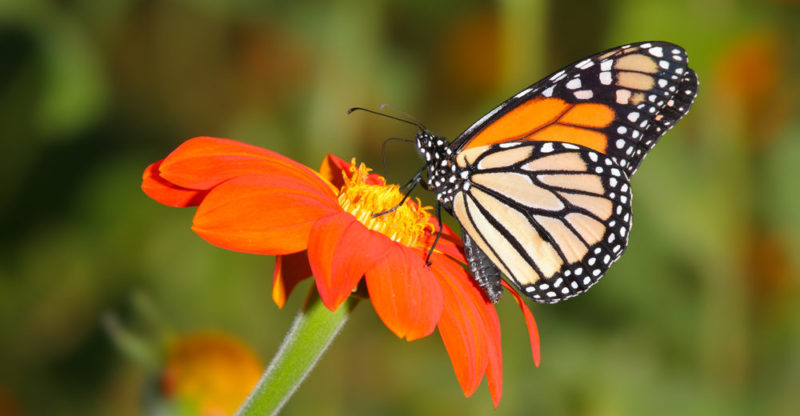
Butterflies and flowers maintain a mutualism relationship, that is, both organisms benefit . Butterflies get their food from the nectar of flowers.
On the other hand, the plants also benefit because when the flowers settle, the pollen remains attached to the bodies of the butterflies , which move it from one flower to another. This process is called zoochory and is a common form of plant reproduction .
reproduction of butterflies
To initiate reproduction , male and female butterflies go through a courtship process , which consists of flapping their wings and also searching for each other through smell, detecting sexual pheromones.
After fertilization, the female lays eggs on a plant . The number of eggs varies between 25 and 10 thousand, depending on the species.
The egg can take between 5 days to 5 months to hatch , depending on the species but also on the weather .
Life cycle of butterflies
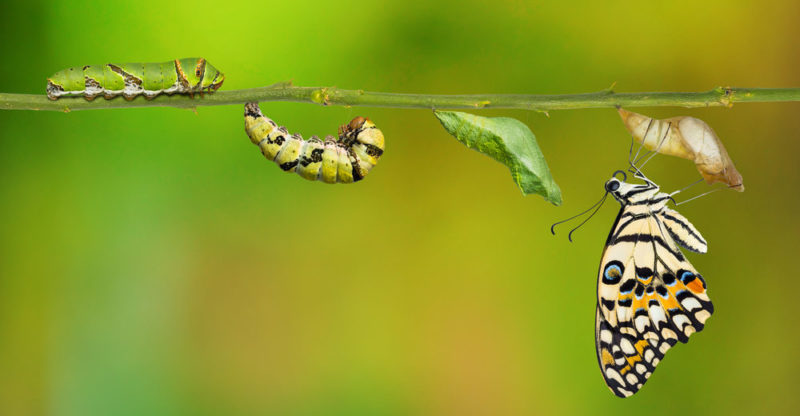
After the embryonic stage and the hatching of the egg, the butterfly goes through three vital phases:
- Larva. During this phase the butterfly is a larva (caterpillar) that begins to eat the leaf in which the egg was deposited. As it eats, the caterpillar expands through molting and is able to move onto other leaves. At the end of this stage, the caterpillar looks for a sheltered place to settle and begins to make a protective layer with materials such as branches, or produces the silk that constitutes the layer itself.
- Chrysalis. The chrysalis or pupa stage is one in which the butterfly undergoes a profound metamorphosis. It is not a question of growth but of a change in the conformation of the organism. During this phase the butterfly remains motionless and does not eat. "Crysalis" is the name of the layer that covers and protects it, also called "cocoon".
- Adulthood. The butterfly emerges from the chrysalis and spreads its wings. Not only does it have the ability to fly, but it also has legs that allow it to move across surfaces.
butterfly habitat
Most butterfly larvae are terrestrial, but there are some aquatic species . Both larvae and adult butterflies are mainly found in environments with abundant vegetation, although some prairie species also exist .
The greatest variety and quantity of butterflies is concentrated in tropical jungles and lowland forests .
Butterfly migration
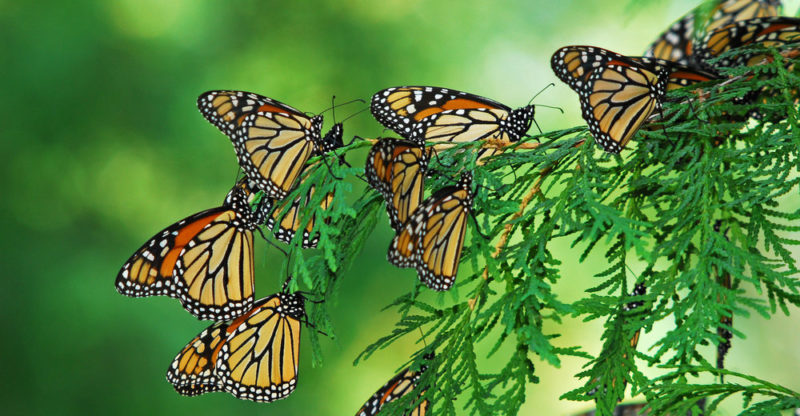
More than 200 species of butterflies migrate during their short lives in search of favorable weather conditions. The most important case is that of the Monarch Butterfly that in the United States migrates south and west to escape winter.
Migration begins when temperatures begin to drop , approximately in October. They are a unique case since no other insect makes such a wide migration: they cover a distance of 2,500 kilometers.
flight of the butterflies
The speed and power of butterfly flight depends on the species but is also affected by temperature and humidity, as they adapt their flight to environmental conditions. The fastest butterflies can fly at 50 kilometers per hour.
In addition, the way they move also varies according to the species : some prioritize speed and perform rectilinear movements, while others move in a zig-zag to avoid possible predators .
Thermoregulation
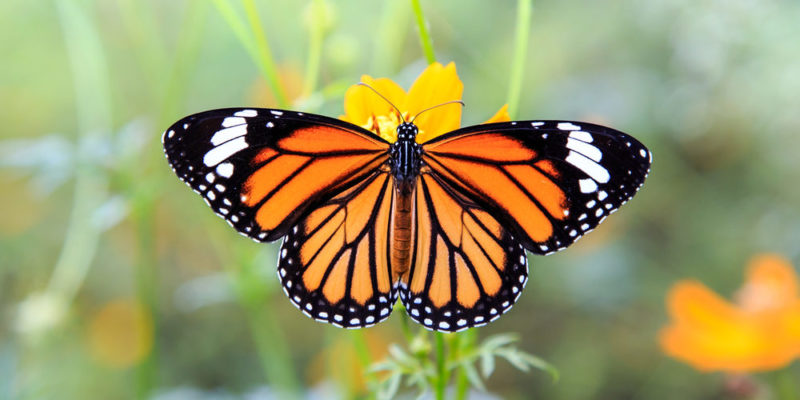
As with most insects, many species of butterflies are ectothermic animals , meaning that they cannot regulate their body temperature by physiological means.
Therefore, when the ambient temperature is not adequate for the proper functioning of their organism, they must resort to thermoregulation behaviors: when the ambient temperature is lower, they increase the movement of their wings and even move their wings before starting the flight to get warm.
On the other hand, there are moths that have endothermy (the ability to control body temperature by physiological means) only in one part of their body: the thorax.
Butterfly anatomy
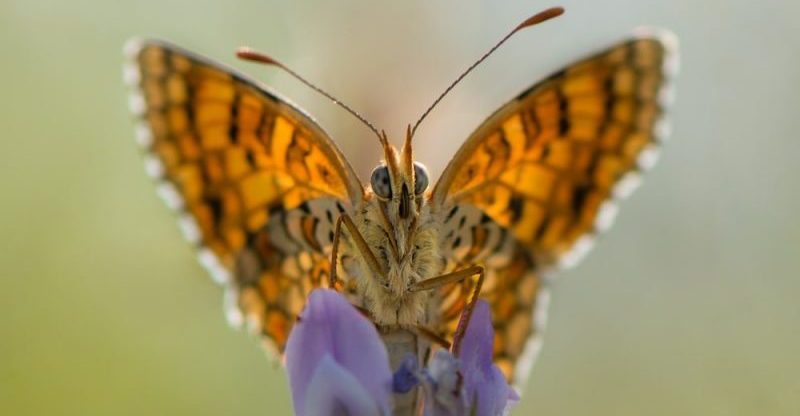
In the adult phase, the butterfly has antennae, eyes, and three pairs of legs . The body, covered by a hard exoskeleton, is divided into the head, thorax, and abdomen.
In addition to the eyes, the butterfly perceives its surroundings through sensory hairs that cover its entire body.
On the thorax there are two pairs of wings formed by membranes and covered with colored scales. Each species of butterfly has a specific coloration and some change coloration with the seasons of the year.
Classification of butterflies
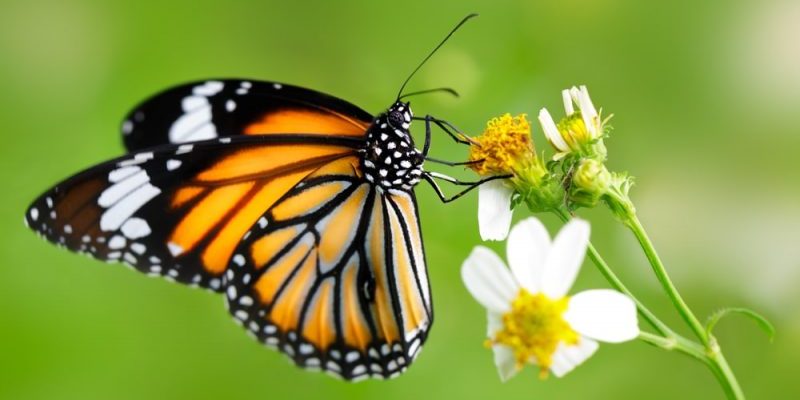
Among the main families of butterflies are:
- Hesperides. More than 3,500 species of robust and small butterflies with grayish colours, ample thorax and separate and curved antennae.
- lycaenids. Small in size and with brightly colored wings, they comprise 40% of diurnal butterfly species.
- Niphalids. Brightly colored medium sized butterflies. They are characterized by having the front pair of legs shorter than the other two pairs.
Luke is passionate about fostering student involvement and connection. He studied psychology for his major and likes learning about the past. Luke aims to specialize in artificial intelligence and cybersecurity. .
Leave a reply
Your email address will not be published. Required fields are marked *Recent post

Sport: What Is It, Types, Risks, Features, Characteristics and Examples

Dogs: Emergence, Features, Characteristics, Feeding and Breeds

Story: Definition, Elements, Structure, Features and Characteristics

